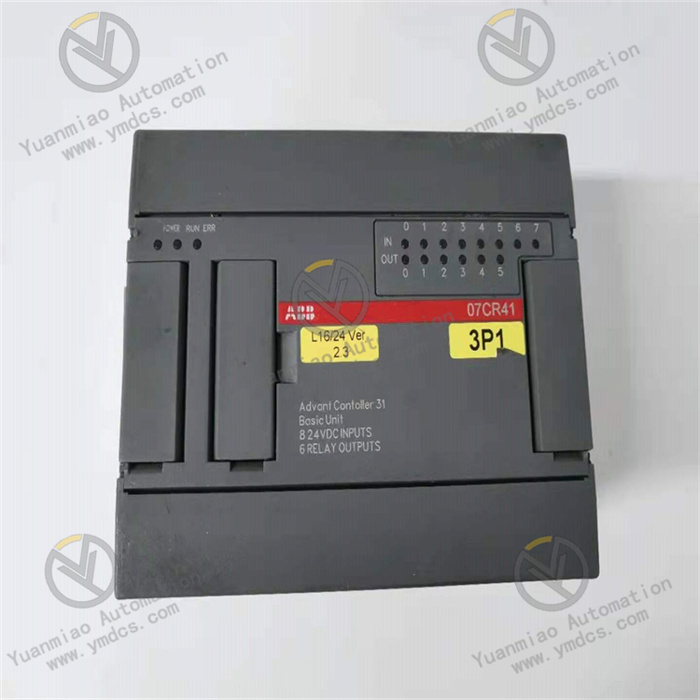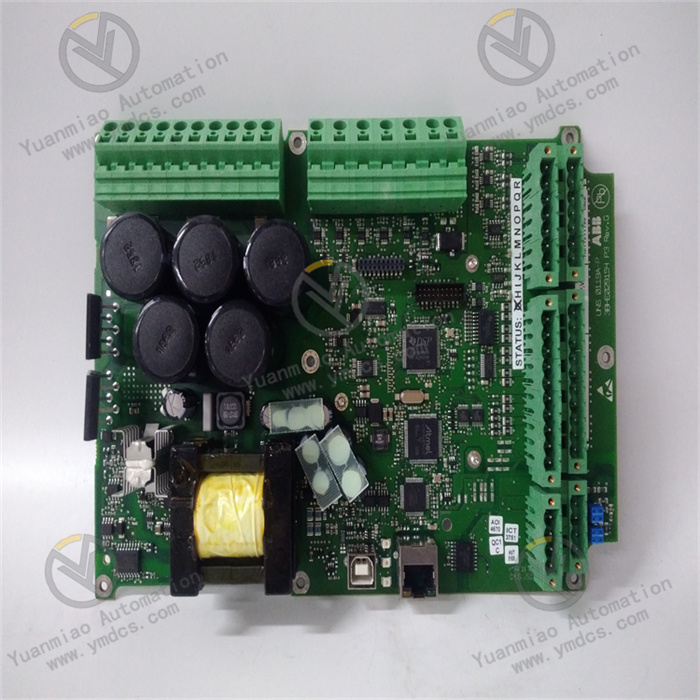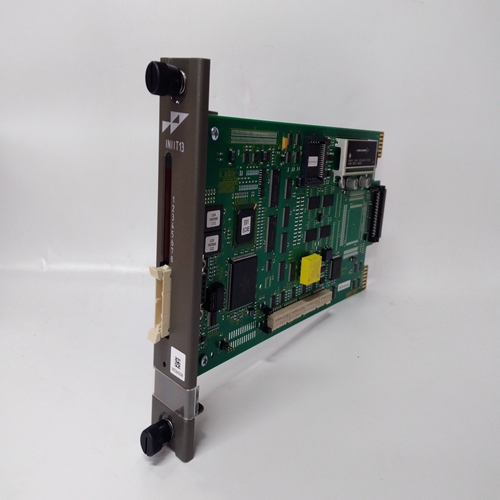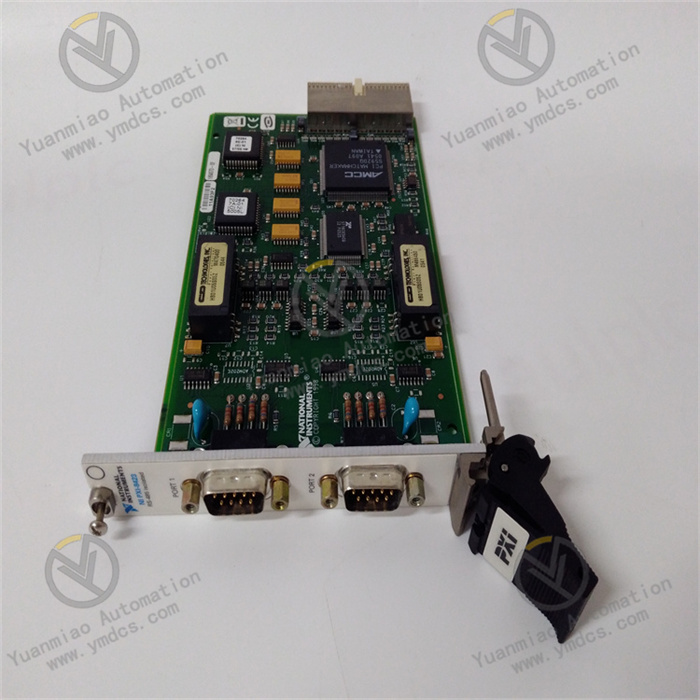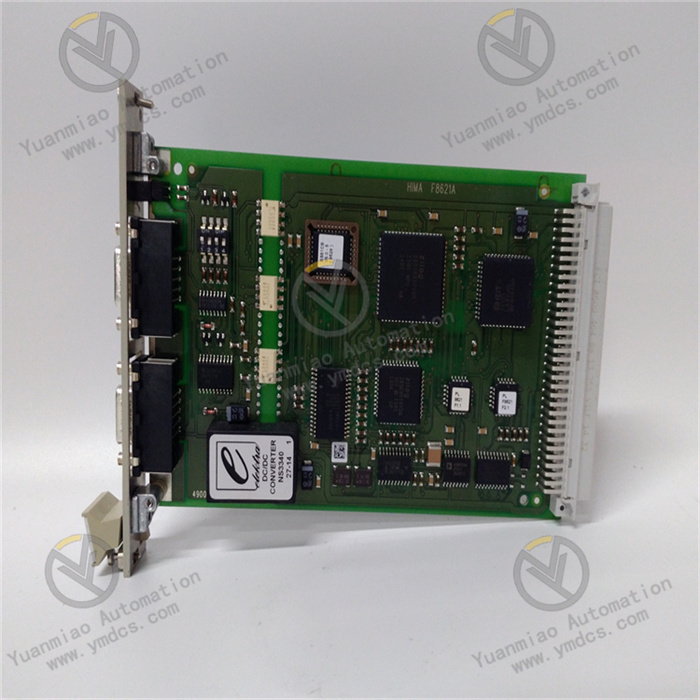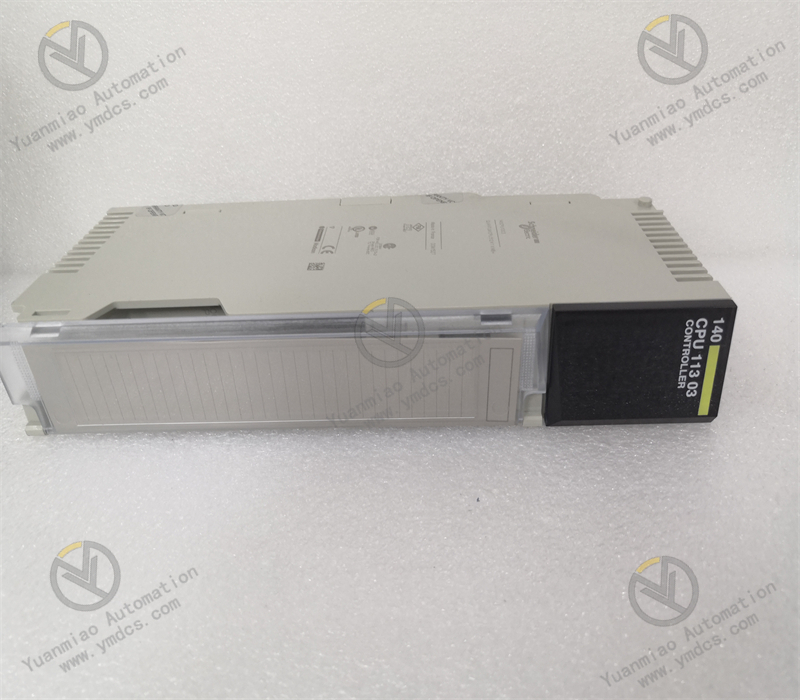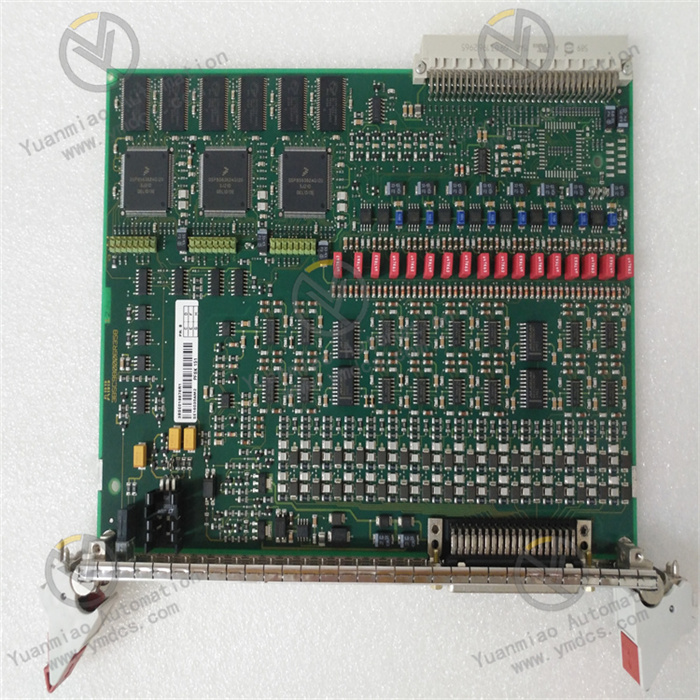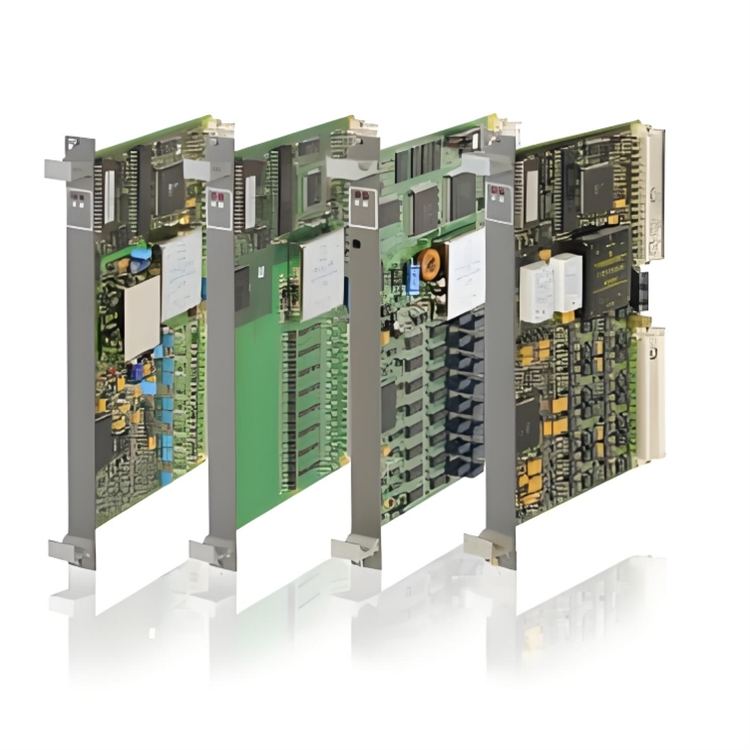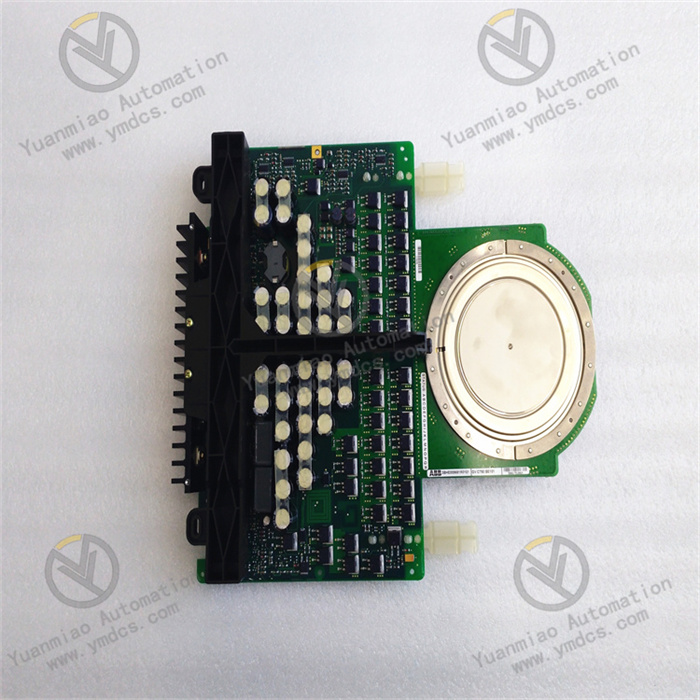Description
ABB 07CR41 1SBP260020R1001
I. Functional Positioning and Application Scenarios
As the basic unit of ABB Advant Controller 41 series controllers, it serves as the core control module in industrial automation systems, mainly used for:
- Process Control: Automation of continuous production processes in chemical, petroleum, power, and other industries, such as closed-loop control of flow, temperature, and pressure.
- Logic Control: Sequential control in scenarios like mechanical manufacturing and wastewater treatment (e.g., motor start/stop and valve switching logic).
- Data Acquisition and Monitoring: Collaborates with SCADA systems to achieve real-time field data collection and communication with host computers.
II. Functional Features
High-performance Processing Capacity
- Equipped with a 16-bit processor running at 20MHz, supporting high-speed execution of PID control algorithms, logical operations, and data processing with a response time ≤10ms.
- Built-in 4MB program memory + 2MB data memory, capable of storing complex control programs (such as multi-variable decoupling control models) and historical data.
Flexible I/O Configuration
- Analog Input (AI): 8 channels, supporting signal types including 4-20mA, 0-10V, PT100 thermal resistors, and thermocouples (types K/J/T), with 12-bit accuracy.
- Analog Output (AO): 4 channels, outputting 4-20mA or 0-10V signals, supporting loads ≤500Ω.
- Digital Input (DI)/Digital Output (DO): 8 channels each. DI supports 24V DC level detection, and DO is relay output (250V AC/2A).
Multi-protocol Communication Capability
- Standard with RS-485 (Modbus RTU) and RS-232 interfaces, optional Ethernet (10/100Mbps) or Profibus DP interfaces.
- Enables data interaction with host computers (e.g., ABB Freelance, third-party PLCs) and intelligent instruments (e.g., pressure transmitters).
High-reliability Design
- Wide temperature range: -40°C to +70°C, adapting to high and low-temperature industrial environments (e.g., beside metallurgical furnaces, cold storage workshops).
- Electrical isolation: Optoelectronic isolation between I/O channels and CPU (isolation voltage ≥2500V AC), resistant to electromagnetic interference (compliant with EN 61000 standards).
- Redundancy support: Optional dual-power modules (24V DC redundant power supply) for automatic switching during faults, ensuring continuous system operation.
III. Technical Parameters
| Parameter Type | Specific Indicators |
|---|---|
| Processor | 16-bit microprocessor, 20MHz |
| Memory | 4MB program memory, 2MB data memory |
| Analog Input | 8 channels, 12-bit accuracy, supporting 4-20mA/0-10V/PT100/thermocouples |
| Analog Output | 4 channels, 12-bit accuracy, 4-20mA/0-10V, maximum load 500Ω |
| Digital Input/Output | DI: 8 channels (24V DC), DO: 8 channels (relay, 250V AC/2A) |
| Communication Interfaces | RS-485 (Modbus RTU), RS-232, optional Ethernet/Profibus DP |
| Power Supply | 24V DC (±15%), power consumption ≤15W |
| Mechanical Characteristics | Dimensions: 220mm×100mm×70mm, weight: 0.8kg |
| Protection Level | IP20 (indoor), compliant with CE and UL certifications |
IV. Working Principle
Signal Acquisition and Processing Flow
- Input Stage: AI channels convert sensor signals (e.g., PT100 resistance from temperature sensors) into digital quantities through conditioning circuits (amplification, filtering), while DI channels detect the on/off status of switch signals.
- Computation Stage: The CPU processes input data according to preset programs (e.g., PID algorithms) to generate control quantities (e.g., valve opening commands).
- Output Stage: AO channels convert digital control quantities into analog signals to drive actuators (e.g., control valves), and DO channels control relay actions (e.g., motor start/stop).
Communication and System Integration
- Communicates with host computers via RS-485 or Ethernet interfaces, uploading real-time data (e.g., reactor temperature) and receiving control commands (e.g., setpoint modifications).
- Supports cascading with distributed I/O modules (e.g., ABB 07KT series) to expand system capacity (max. 128 I/O points).
V. Troubleshooting Guide
Power Abnormality
- Phenomenon: Power indicator (POWER LED) off, module unresponsive.
- Troubleshooting:
- Measure the voltage at the power terminals with a multimeter, ensuring it is within 20.4-27.6V DC.
- Check for loose power cables or blown fuses (if external fuses exist).
- For redundant power supplies, confirm automatic switching to the redundant supply after disconnecting the main power.
Abnormal Input Signals
- Phenomenon: Significant deviation between AI channel readings and actual sensor values; DI indicators do not change with switch actions.
- Troubleshooting:
- Measure sensor outputs (e.g., 4-20mA signals with a multimeter) to confirm sensor normality.
- Check input cables for short circuits/opens (e.g., correct three-wire connection of PT100).
- View channel calibration values via module diagnostic software and re-calibrate if necessary (e.g., AI channel zero/full-scale calibration).
Communication Interruption
- Phenomenon: Host computer cannot read module data; communication indicator (COM LED) flashes abnormally.
- Troubleshooting:
- Check communication cables (e.g., RS-485 wires for reverse connection, shield grounding).
- Confirm communication parameters (baud rate, data bits, parity) match the host computer (e.g., Modbus set to 9600bps/8N1).
- Replace the communication interface module (e.g., if the RS-485 interface chip fails, reconfigure the protocol after replacement).
Output Failure
- Phenomenon: No AO current output; DO relays do not actuate.
- Troubleshooting:
- Measure AO terminal voltage/current with a multimeter. If zero, check if module output enable is activated (via software configuration).
- For DO channels, manually short the output terminals. If the actuator acts, the relay contacts are damaged (replace the module).
- Check for load overload (e.g., AO output may be abnormal when load >500Ω).
VI. Typical Application Cases
Temperature Control of Chemical Reactors
- AI channels collect thermocouple temperature signals, the CPU runs PID algorithms to generate AO signals (4-20mA) to control heating valve opening, while DI monitors agitator motor status and DO controls alarm indicators.
Aeration Control in Wastewater Treatment
- Based on dissolved oxygen (DO) concentration collected by AI, automatically adjusts the frequency converter of the blower (AO outputs 0-10V) and communicates with the PLC via Profibus to upload data to the central control room.
VII. Comparison with Similar Products (vs ABB 07KT98C)
| Parameter Dimension | ABB 07KT98C | ABB 07CR41 |
|---|---|---|
| Processor Performance | 100MHz (higher clock speed) | 20MHz (16-bit architecture) |
| Memory Capacity | 2MB program + 1MB data | 4MB program + 2MB data (larger storage) |
| Analog Input Channels | 8 channels (supports PT100) | 8 channels (additionally supports thermocouples) |
| Communication Interfaces | Ethernet/RS-232/RS-485 | Standard RS-485/RS-232 (Ethernet optional) |
| Application Scenarios | Small to medium control loops | Medium to large systems (supports more I/O expansion) |


